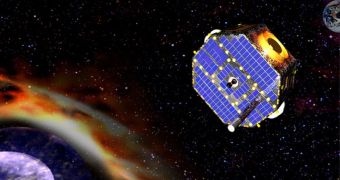Data from satellites charged with producing a map of our solar system and its limits have revealed that our “bubble” ends with a very narrow ribbon of densely packed neutral atoms, rather than with an area of evenly distributed ones. The fringes of the solar system can only be imagined, astronomers say, if we take into account these neutral atoms, which are not influenced by the Sun. The data used for this conclusion came from the American space agency's IBEX (Interstellar Boundary Explorer) satellite, Wired reports.
“Our maps show structure and energy spectra that are completely different from what any model has predicted,” Herbert Funsten explains. He is a scientist at the US Department of Energy's (DOE) Los Alamos National Laboratory (LANL), in New Mexico, and also the co-author of a new paper detailing the finds. Six researches on the subject were published online in the October 15 issue of the top journal Science, and all of them combined to send astrophysicists back to the drawing board.
The new find could also reshape our understanding of how the heliosphere, the protective layer our Sun generates, and within which all objects in the solar system reside, interacts with the space beyond it. This is very important, as the strength of this layer is a determinant factor in understanding the amount of cosmic radiation that hits our planet. Boston University theorist Nathan Schwadron, lead author on one of the papers, says that the magnetic field of the Milky Way may be, in fact, the main organizer of our solar-system boundaries.
For more than 48 years, experts have believed that the strength of the heliosphere, and of the solar winds that generate and support it, implicitly, is the main determinant factor in establishing our bubble's boundaries. At this point, however, it's still not clear whether the thin, densely packed boundary is a permanent feature, or if it's a random occurrence that is soon to be replaced by another. The structure is located about 100 to 125 astronomical units (AU) away from the Sun. An AU has 150 million kilometers (93 million miles) and represents the distance between the Earth and the Sun.
The neutral ribbon can be observed at energies between 200 and 6,000 electron volts, though it is most active at around 1,000 eV. “First and foremost, this is a big surprise because we thought we know a lot about this region, the edge of the heliosphere,” expert David McComas, from the Southwest Research Institute, in San Antonio, says.

 14 DAY TRIAL //
14 DAY TRIAL //